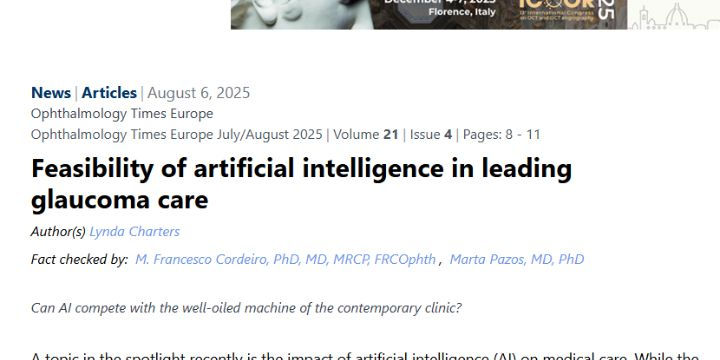AI Glaucoma Detection and Machine Learning Revolutionize Remote Screening, Outperforming Human Experts
- 22 oct
- 2 Min. de lectura

The conversation surrounding Artificial Intelligence often centers on philosophical debates or future labor markets, but in the field of ophthalmology, AI is delivering concrete, life-saving breakthroughs right now. Recent findings underscore a powerful trend: Machine Learning algorithms are not just assisting human doctors in detecting glaucoma risk—they are demonstrably outperforming them.
The implications of this shift, particularly in AI Glaucoma Detection, are monumental, promising higher accuracy and vastly improved access to care, especially in regions currently underserved by specialists.
A compelling study from University College London (UCL), reported in October 2025, confirmed that a machine learning algorithm exhibited superior performance compared to trained human graders. Analyzing 6,304 fundus images sourced from the extensive EPIC-Norfolk Eye Study, the AI achieved an accuracy rate of 88-90%. In contrast, the human graders scored significantly lower, registering an accuracy range of 79-81%. This superior performance was based on the AI's ability to estimate the vertical cup-to-disc ratio, a critical marker for assessing glaucoma risk. The data shows that the algorithm is capable of identifying the disease at crucial stages with a consistency and precision that current human resources struggle to match.
But the revolution is not confined to high-tech university labs. The most exciting developments are those geared toward democratizing access through Remote Screening.
In August 2025, the LV Prasad Eye Institute in Hyderabad validated a critical innovation: an offline AI tool designed to function seamlessly with readily available smartphone cameras. This tool demonstrated a remarkable efficiency rate of about 92% in detecting glaucoma. Imagine the potential impact of placing a 92%-accurate detection tool into the hands of healthcare workers in primary care settings or low-resource regions—this bypasses the traditional requirements of expensive, specialized equipment and infrastructure.
This push toward localized and accessible screening is gaining serious momentum and investment. In Australia, the Lions Eye Institute was awarded $5 million to deploy an AI-powered retinal scanner. The explicit goal of this initiative is to improve glaucoma detection specifically in the remote regions of Western Australia, where access to specialist ophthalmologists is often scarce. This funding, reported in October 2024, highlights the global recognition that technology, specifically AI-powered devices, is the most viable path toward closing health equity gaps.
Whether evaluating complex retinal images in a research setting or enabling high-efficiency screening via a simple smartphone camera in the field, Machine Learning is redefining the early detection standards for one of the world's leading causes of preventable blindness. The message is clear: the integration of AI Glaucoma Detection methods is not just an incremental improvement; it is a fundamental leap forward in patient care, ensuring that highly accurate, life-changing diagnoses can reach everyone, everywhere.







